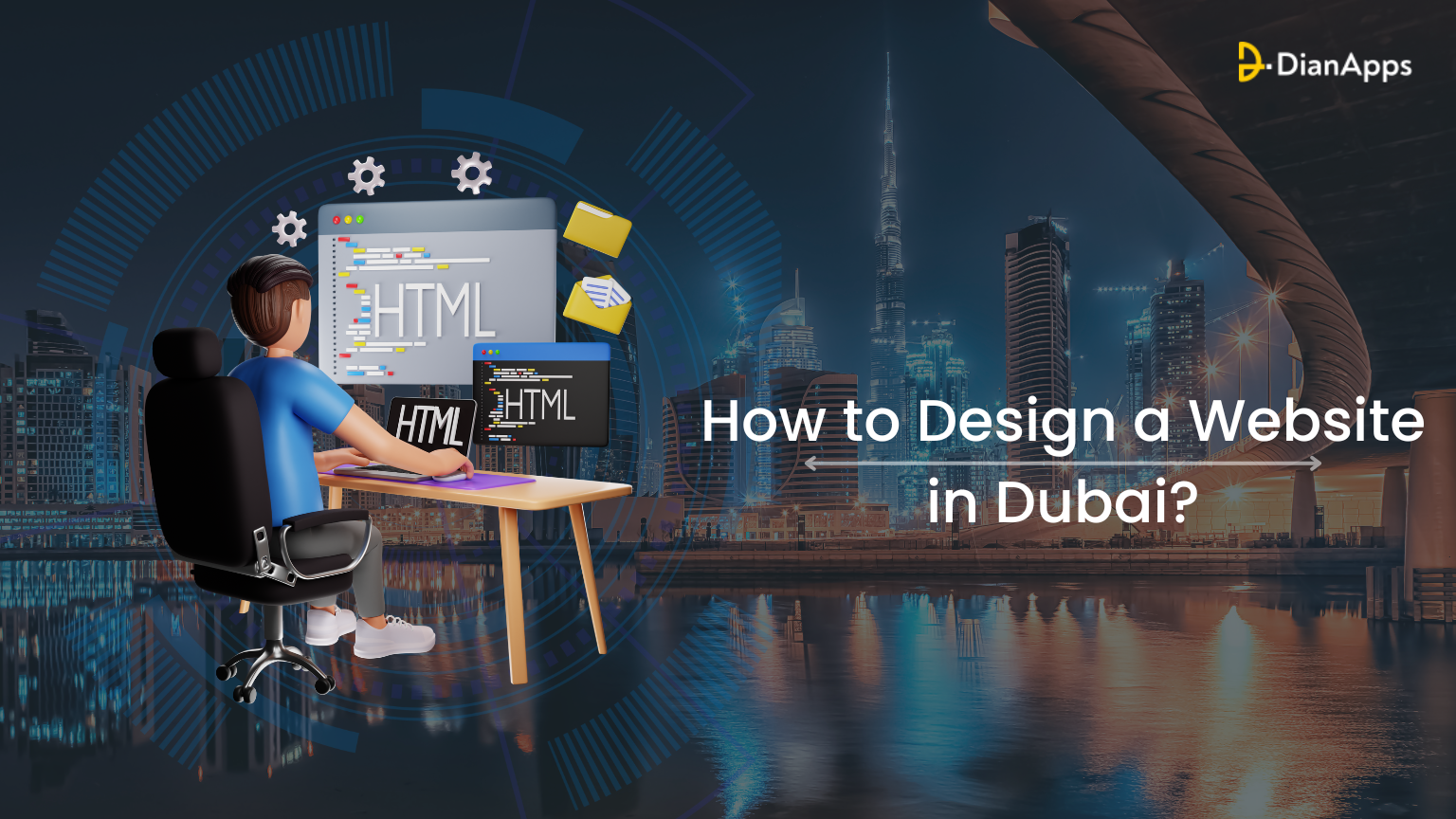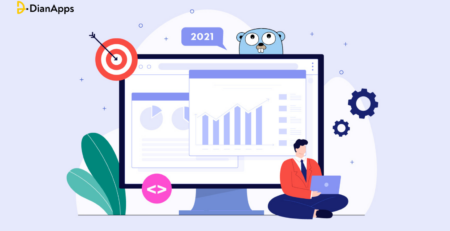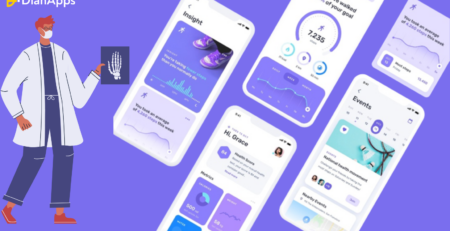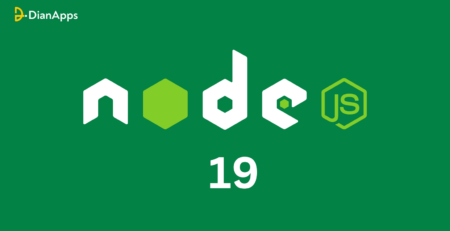How to Design a Website in Dubai: A Complete Guide?
Let’s be honest, if your business is based in Dubai and still doesn’t have a proper website, you’re already a step behind.
With over 11.1 million internet users in the UAE (yes, that’s almost 99% of the population), your audience is online, scrolling, comparing, and clicking. And if they can’t find you there? They’ll find someone else.
In a city that thrives on speed, luxury, and smart choices, a well-designed website isn’t just something on your to-do list; it’s your first impression.
It’s also your customer service desk and salesperson working 24/7, rolled into one place.
But here’s the tricky part:
Just having a website isn’t enough anymore. It has to look good, work smoothly, and actually drive results for your business.
Whether you’re starting fresh or thinking of revamping your current site, this guide will walk you through everything, from choosing the right design to picking the right website development company (because let’s face it, DIY only goes so far).
We’ve broken it down in a way that’s easy to follow, even if you’re not tech-savvy. So, ready to design a website that actually works in Dubai’s competitive market?
Let’s get deep insights into it.
Why Website Design Is Crucial for Businesses in Dubai
Gone are the days when customers simply browsed through a company brochure or catalogue to understand the business’s working strategy. Today, with the internet becoming a vital part of customers’ lives, they expect to find most of the useful information directly on the website.
Moreover, a recent report by AgencyBloc states that 57% of respondents wouldn’t recommend a business if they had a poor experience on its website. This statistic clearly shows that the buyer journey now starts with a Google search. Your website plays a major role—if it has poor functionality and doesn’t meet user expectations, there’s a high chance of losing potential customers even before you can reach out to them.
Apart from driving high conversion rates, appealing websites also contribute to several other key factors, such as:
- SEO
- Customer Service
- Lead Generation
- Revenue Growth
It’s essential to implement website design practices that can serve as your 24/7 sales partner and act as a reliable platform where customers can make confident purchasing decisions.
In today’s digitally advanced environment, having a scalable and user-friendly website is not just an option; it’s a necessity for ensuring business success.
Popular Types of Website Designs in Dubai
Before moving on to developing a website design, it is crucial to acknowledge the different types of website designs popularly used in Dubai:
Static Website Design
Static websites are commonly used by businesses looking for a simple online presence. They provide static content and layout, and are considered one of the most cost-friendly website design methods for small businesses.
Single Page Website Design
If you are looking for a cost-effective method, single-page or one-page website design offers exceptional advantages and user experience by delivering all the necessary information on a single long page. This is ideally used by self-employed individuals looking to deliver content without stuffing multiple pages into a website.
Dynamic Website Design
Dynamic websites are widely used by large businesses such as Twitter, Netflix, LinkedIn, Etsy, etc. These websites adapt based on user interactions, offering innovative features such as customized experiences and live inventory displays. They use both client-side and server-side languages to build web pages on the back end of the application.
E-commerce Website Design
Today, 50% of Dubai’s population uses virtual platforms to buy or sell products. To facilitate this, e-commerce platforms are designed with secure payment gateways, robust product listings, and seamless shopping experiences.
If you want to enhance customer satisfaction and drive conversions, it’s essential to focus on both the design and functionality of the website. E-Commerce website development cost in Dubai (UAE) varies based on multiple factors, including complexity, features, and more.
Responsive Website Design
Currently, around 56% of users access websites through their mobile devices. Responsive websites are designed to dynamically adjust based on the layout of the user’s device, ensuring a consistent experience across all screen sizes.
Custom Website Design
A custom website is commonly chosen by businesses in Dubai to meet specific goals, offering greater creativity and flexibility. These websites are developed from scratch, aligning entirely with the project requirements and allowing for more branding opportunities and deeper customization.
Different Types of Website Platforms: Which One Should You Choose?
Website platform selection is one of the most important aspects of a website development project. All website platforms are utilized from different perspectives, and not all of them offer the same features and functionalities.
In this section, we’ll take you through different types of web design platforms so you have a clear understanding of your options.
Some of the popular types of website platforms are:
- CMS (Content Management System)
- Website Builder
- Custom Coded
Let’s look at each type of website platform in detail:
CMS Platform
Website development through a CMS platform allows users to fully customize their websites. This type of site is usually built using a page builder tool and often starts with a pre-filled template. Some of the most popular CMS platforms include Magento, WordPress, Joomla, and Drupal.
With a CMS, businesses can make any kind of customization to their websites. This platform is ideal for people looking for full control over their website.
Major CMS platforms offer a wide range of plugins, both free and paid. Due to the ease, flexibility, and accessibility they provide, CMS platforms are a go-to choice for businesses of all sizes.
Website Builder
Website builders are a recent innovation in website development. These platforms are designed to provide ease and accessibility to businesses with minimal hassle.
Common examples of website builders include Shopify, Wix, and Squarespace. These platforms are easy to use, even for non-tech-savvy individuals, as they offer drag-and-drop functionality to create a complete website.
However, this convenience comes at a cost. Most website builders require a monthly subscription fee. While free options are available, they offer limited functionality and often require payment after a trial period.
These platforms offer limited customization, mostly restricted to images and text. Despite the limitations, they are widely used by e-commerce websites, especially those handling high traffic, as hosting is managed directly through the platform.
Ironically, while website builders are not considered ideal for startups, they are still commonly used by new businesses due to their simplicity.
Recommended Read: Custom Web Development Services Vs. DIY Website Builders
Custom Coded
Custom-coded websites are no longer the most commonly used platform, but they were widely used in the earlier days when other options were not available. With this approach, a website is completely customized from start to finish, covering design, layout, structure, functionality, and the backend code.
These platforms offer limited ability for users to make changes themselves. Updates and modifications typically need to be done by the development agency.
Unlike CMS platforms, custom-coded sites do not have plugin functionality, meaning additional features must be developed from scratch. This makes it one of the most expensive types of website development platforms.
Stepwise Process to Design a Website in Dubai
Designing a website in Dubai no longer remains a complex process; it involves a simple, clear, and structured approach. Here is the complete step-by-step guide to ensure your site is both engaging, scalable, and business-ready.
Define Your Goals and Audience
This step plays an important role in the success of your application. Before starting to design a website, ask questions such as:
- What do you want to achieve?
- Who are your visitors?
Answers to these questions will help you make the right and informed decisions.
Research the Local Market
Once you have a clear project vision, ensure to analyze the local competitors in your sector to analyze what works for them and what doesn’t. Also consider understanding UAE regulations on data privacy and e-commerce (e.g., Etisalat TRA guidelines).
Create a Site Map & Wireframes
Before starting to design a website, ensure that you have a rough draft of the pages and also build low-fidelity layouts to map content hierarchy and user flow.
Design Mockups & Visual Style
Ensure to create a visually appealing mockup that reflects your brand identity and attracts Dubai’s audience. Make a correct choice in fonts, colors, and layouts. Once a rough design is prepared, share it for feedback and ensure they offer a great user experience across all devices.
Develop & Integrate Functionality
Once a design is approved, turn it into a fully functional website. To convert your design into a functional website, you might need to choose the right platform, such as CMS, a website builder, or custom coding, and integrate some key features such as payment gateways, mobile responsiveness, and forms for a seamless user experience.
Test Across Devices & Browsers
Test your website on various browsers and devices to ensure smooth performance. Fix broken links, loading issues, or layout shifts to avoid frustrating users and damaging your brand’s image.
Launch & Monitor
Once your site is fully tested, go live with your site. Set up tools such as Google Analytics to track performance and user behaviour. Ensure basic SEO is in place so your website ranks well from the start.
Ongoing Maintenance & Optimization
Keep your website updated with fresh content, regular security checks, and performance tweaks. Analyze user data, run A/B tests, and continuously improve to stay relevant and competitive in Dubai’s market.
Website Design Mistakes to Avoid in Dubai
Here are some of the most common mistakes that every business must avoid to ensure the future success of your website:
- Slow Loading Speed: Dubai users expect speed. A slow site can cost you conversions and affect the SEO of your website.
- Poor Navigation: Complicated menus or unclear CTAs confuse users. Keep navigation intuitive and user-friendly.
- Overloading with Visuals: Too many animations or high-res images can clutter the UI and slow down performance.
- Lack of Local SEO: Not optimizing for Dubai-specific searches means missing out on your core audience.
- No Arabic Language Option: Catering only to English-speaking users may limit reach. Offer bilingual support if possible.
- Ignoring Cultural Aesthetics: Designs that don’t align with local preferences may feel disconnected or less trustworthy.
- Not Including Contact Information: Missing or hard-to-find contact details can reduce credibility and lead to lost leads
How Much Does a Website Design Cost in Dubai
Website design remains a crucial factor for the success and the online visibility of the business. Before heading on to developing a website, every business looks for the website development cost in Dubai. Various factors affect the web design price in Dubai. Let’s see the factorwise cost of website design in Dubai.
- Domain Purchase (AED 100 – AED 170 Yearly)
- Website Hosting (AEED 75 – AED 500 Yearly)
- UI/UX Design (AED 2,000 – AED 10,000)
- Frontend development (AED 4,000 – AED 23,000)
- Backend development (AED 7,000 – AED 15,000)
- SSL Certification (AEED 400 – AED 900 Yearly)
- Maintenance & Support (AED 5,000 – AED 12,000 Yearly)
Final Words
Whether you are looking for the frontend or the backend website development solutions, you definitely need to get in touch with the right development agency. Dubai, being a digitally advanced city, has a wide range of leading UI/UX design services to build an intuitive website that easily captures user attention and increases conversion rates.




